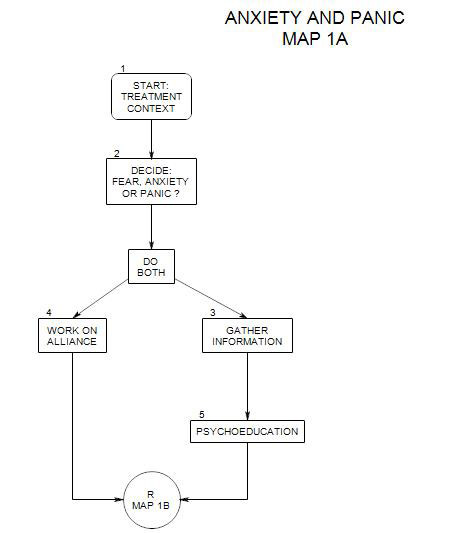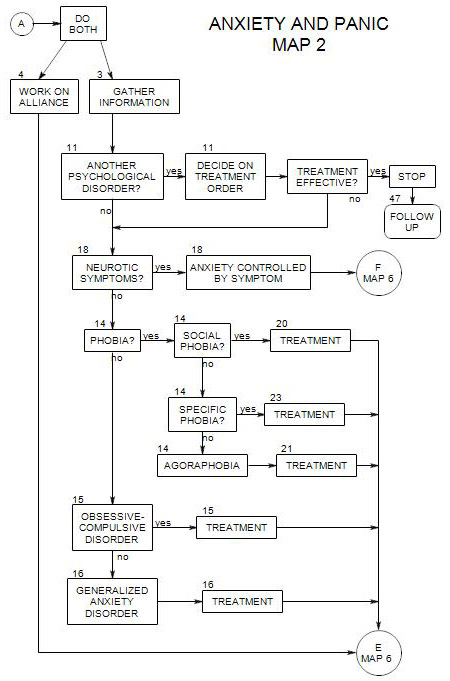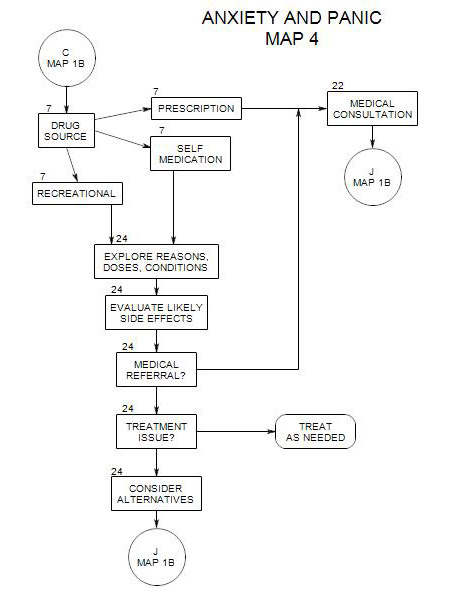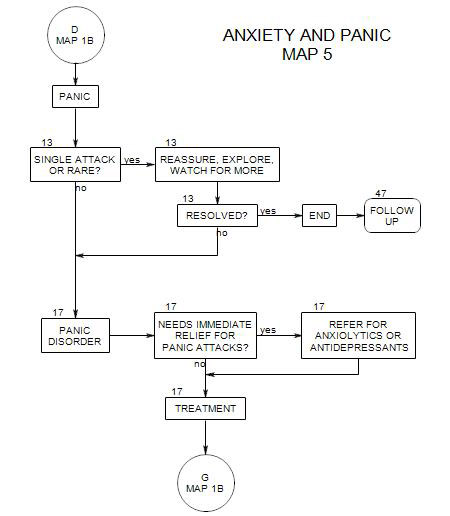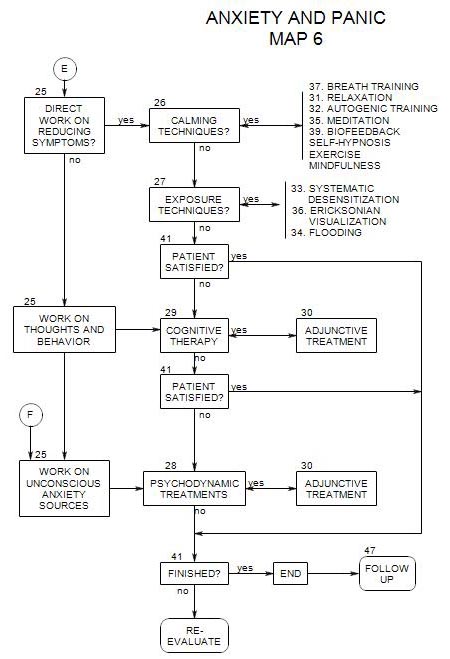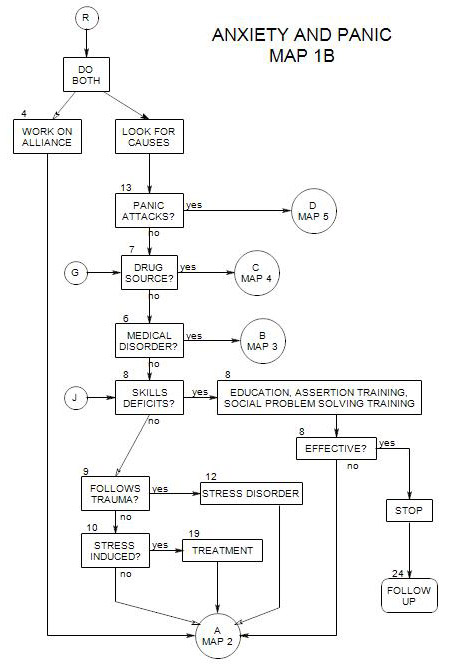
SECTIONS: 4 | 6 | 7 | 8 | 9 | 10 | 12 | 13 | 19 | 24
- This section follows from Section 25 , which discusses choices among therapies. It appears on Map 6
There are a number of different techniques that have the effect of lowering overall anxiety level without addressing specific sources of the person’s anxiety or forcing the person to extinguish the fear through direct exposure to the feared object or situation.
Calming techniques may be the primary form of treatment in some cases, or they may be used as adjunctive to exposure, cognitive, or psychodynamic therapies.
Included among calming techniques are-
- Systematic relaxation [ Section 31 ]
- Meditation [ Section 35 ]
- Biofeedback [ Section 39 ]
- Stress control procedures
- Self-hypnosis
- Autogenic training [ Section 32 ]
- Exercise
- Yoga
- Other absorbing body work
Choice among techniques
Following is a beginning to a map for this section. It needs a lot of work.
CHOICE BASED ON SYMPTOM TYPE
If there is a neuromuscular component to a person’s symptoms [as in tension headaches, hypertension, irritable bowel syndrome, asthma], progressive relaxation can be helpful. (Lehrer and Carr, 1997, p.84)
Progressive relaxation can also help with specific symptoms such as worry, insomnia and obsessive ruminations (Lehrer and Carr, 1997, p.84).
For stress reduction, autogenic training can be helpful.
CHOICE BASED ON DIAGNOSIS
It may be that an obsessive patient will be likely to carry out a new technique or keep track of a complicated treatment plan. A patient with a specific phobia may need to learn and practice a calming technique and then only use it in preparation for a feared event.
CHOICE BASED ON CURRENT ACTIVITIES
If the patient is currently using some way to relax, you may want to expand on it. This solution is already available to the patient, and it could involve very little additional commitment.
For example, a patient with chronic pain likes to sit on his deck and watch the birds. Maybe he could do that regularly, watch them for a while each time, and really get in to their movement and patterns. The result, if pursued, might end up as a form of meditation.
A person who rides a commuter train already has a time commitment to be somewhere regularly, twice a day. Perhaps some of that time could be devoted to a calming technique.
On the other hand, some patients may welcome the introduction of a new time or technique that has your authority as a likely way to reduce anxiety.
CHOICE BASED ON PATIENT LIMITATIONS
Choose biofeedback over progressive relaxation when a person can’t isolate feelings of tension in habitually tense muscles (Lehrer and Carr, 1997, p.850).
If a patient reacts badly to suggestion, choose progressive relaxation over hypnotic techniques or autogenic training (Lehrer and Carr, 1997, p.92).
Where the person needs to maintain conscious control, the passive nature of autogenic training and progressive relaxation may be both difficult and rewarding. Here a question might be whether to avoid pressing the person to be more passive or work on training him/her to be better at it.
There may be value in presenting some patients with a choice between progressive relaxation and autogenic training, to see which one they are more comfortable with (Linden and Lenz, 1997, p.149).
CHOICE BASED ON THERAPY GOALS
Choose progressive relaxation training over procedures that quickly train the whole body in one session by tension-relaxation of muscle groups, if you want the training to lead to better control and greater usefulness (Lehrer and Carr, 1997, p.86).
Meditation, progressive relaxation and autogenic training are similar in emphasizing a letting-go (Linden and Lenz, 1997, p.121).
Autogenic training and progressive relaxation sensitize the person to physical sensations, whereas meditation doesn’t (Linden and Lenz, 1997, p.121).
Biofeedback helps people gain greater awareness of involuntary processes through use of technical equipment (Linden and Lenz, 1997, p.121).
Where there is a need for rapid results or where the person is only concerned with outcomes, progressive relaxation and autogenic training may not be focused enough or rapid enough for the person to maintain motivation sufficiently to obtain beneficial results
CHOICE BASED ON SIDE EFFECTS
Progressive relaxation is less likely than autogenic training or meditation to induce a re-experiencing of a traumatic event (Lehrer and Carr, 1997, p. 90).
